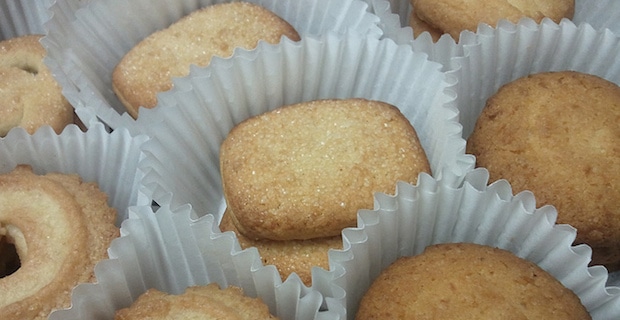
Trans fat, or trans fatty acids, were created to replace traditional fats used in cooking and food preparation such as lard, palm oil, coconut oil and butter. The earliest product that hit the market was Crisco shortening in 1911 as a means to provide an economical alternative to animal fats and butter. This new shortening was the result of the hydrogenation of cotton seed oil. Nowadays, trans fats typically derived from oleic acid, a monounsaturated fat.
It’s important to note that there are different forms of trans fat occurring in nature, mostly found in the milk of ruminants like goat, sheep, and cows. This type of trans fats is not of concern because it has a different structure and in fact has been shown to have many health benefits. The trans fats of concern are those that are the result of partial hydrogenation, also referred to as ‘industrial trans fats’.
Read more about the trans fat labeling loophole
Why is trans fat used in our food production in the first place?
Trans fat provide a stable solid fat to replace traditional fats. Liquid oils do not have a long shelf stable nor do they produce the same kind of food product (texture, mouth feel etc.) when they are used to replace solid fats making them unattractive to food manufacturers.
Trans fats can be found in numerous foods – commercially packaged and baked goods, commercially fried food, microwave popcorn , and in many ‘vegetable shortenings’, and cheaper margarines. Any packaged goods that contain "partially-hydrogenated vegetable oils", "hydrogenated vegetable oils" or "shortening" most likely contain trans fat. While technically ‘fully’ hydrogenated oil should not have any trans fat but rather be fully saturated, the likelihood that traces of trans fats could be found are high.
What are the concerns about trans fat?
Without a doubt, industrial trans fat significantly increase the risk for cardiovascular disease including heart disease, stroke and dementia and diabetes. Health agencies and governments all agree that industrial trans fats have no place in a healthy diet and the Institute of Medicine has advised consumers to consume as little as possible; none if possible.
Read more about the FDA's proposed ban on artificial trans fats
How to avoid trans fat
Use food ingredient lists and Nutrition Facts Tables. Avoid products that list contain the words "partially-hydrogenated vegetable oils", "hydrogenated vegetable oils" or "shortening" in the ingredient list. Regarding the Nutrition Facts Table, choose those products that read “no trans fat” to ensure the product is indeed trans fat free. If the label reads “0g trans fat”, the product may contain up to 0.5g per serving. If the serving size of the food product is small, it’s possible to eat several servings in one sitting taking trans fat consumption into the several grams zone.
Image: Kristin Brenemen




